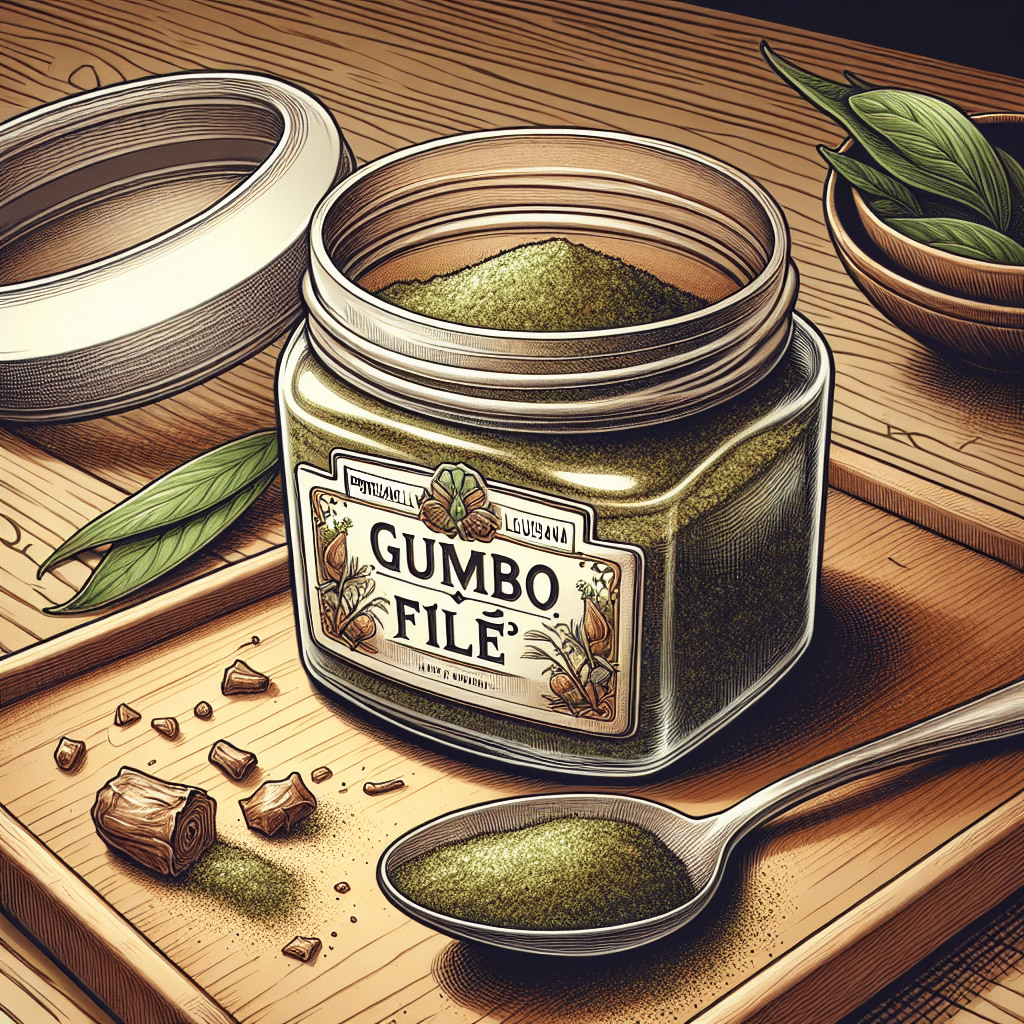Introduction to Gumbo File
Gumbo file, also known simply as file, is a spice made from the dried and ground leaves of the sassafras tree (Sassafras albidum). This unique herb is iconic in Creole and Cajun cooking, particularly in Louisiana, where it is a key ingredient in the traditional dish known as gumbo. It provides a distinct flavor profile with a slightly earthy, herbal taste, often described as reminiscent of root beer, due to its association with sassafras, which is a common flavoring in that beverage. As a thickening agent, gumbo file helps to create a rich texture in soups and stews. In addition to its culinary uses, file has a historical significance among Native Americans and early settlers, who valued sassafras for its medicinal properties. Today, gumbo file is widely used to enhance the flavor and texture of various dishes, embodying the spirit of Southern cuisine.
Understanding Gumbo File
What is Gumbo File?
Gumbo file is a savory seasoning made from the dried leaves of the sassafras tree, widely recognized for its role in traditional Louisiana cooking, particularly in gumbo dishes. The leaves are carefully harvested, dried, and ground into a fine powder, imparting a distinctive flavor and aroma to dishes. A defining characteristic of gumbo file is its ability to act as a thickening agent; when added towards the end of cooking, it not only thickens the dish but also builds layers of flavor. Its deep connection to the Cajun and Creole culinary heritage makes it a staple in kitchens across the Southern United States.
History and Cultural Significance
The history of gumbo file is as rich as the dish itself. Native Americans are believed to have introduced sassafras to early European settlers, who soon adopted it for culinary and medicinal purposes. Historically, file powder was used as a thickening agent before the introduction of okra, another common thickening component in gumbo. As Louisiana’s culinary traditions evolved, gumbo file became an intrinsic part of what is now recognized as Creole and Cajun cuisine. The cultural significance of gumbo file extends beyond flavor; it symbolizes the blending of indigenous and European cooking practices.
How to Use Gumbo File
In Cooking
When using gumbo file in your cooking, timing is key. It is typically added towards the end of the cooking process to preserve its flavor and thickening properties. Here’s how you can effectively incorporate it:
- As a Thickener: Stir in a teaspoon or two of gumbo file to your gumbo, soup, or stew at the last moment before serving. Avoid boiling it, as this can diminish its flavor.
- For Flavor: Sprinkle over individual servings of gumbo before consumption to enhance the depth of flavor.
- In Marinades: Add it to marinades for meats, especially poultry, to impart a unique herbal note.
Recipes Featuring Gumbo File
Gumbo file takes center stage in many traditional dishes. Consider these popular recipes:
- Classic Gumbo: A hearty dish typically made with a roux, various meats (such as chicken, sausage, and seafood), vegetables, and gumbo file, providing that essential flavor and texture.
- File Gumbo with Okra: Combining both gumbo file and okra, this version maximizes texture while balancing traditional tastes.
- Seafood Gumbo: Featuring shrimp, crab, and fish, the addition of gumbo file brightens the dish, enriching its seafood notes.
Nutritional Benefits
Aside from its culinary applications, gumbo file offers some potential health benefits. Sassafras has been traditionally used for its anti-inflammatory and antioxidant properties. However, it’s crucial to use it in moderation, as excessive consumption can pose some health risks due to the presence of safrole, a compound regulated by the FDA. Always consult with a healthcare professional regarding dietary concerns, especially if exploring sassafras for its medicinal benefits.
Finding and Storing Gumbo File
Where to Buy
Gumbo file can be found in various grocery stores, especially those with a focus on international or Southern cuisine. Additionally, specialty spice shops and online retailers offer quality options. When purchasing, look for high-quality, finely ground gumbo file to ensure optimal flavor.
Storage Tips
To maintain the freshness and potency of gumbo file, store it in an airtight container in a cool, dark place, away from direct sunlight. Proper storage can extend shelf life, allowing you to enjoy its vibrant flavors in your creations for months.
Common Misconceptions
While gumbo file is a beloved ingredient, certain myths persist:
- Not a substitute for okra: While both file and okra can thicken gumbo, they contribute distinct flavors, and each has its place in authentic recipes.
- Safrole concerns: Though safrole is present in sassafras, typical culinary usage of gumbo file is not typically considered harmful. Moderation is key.
Conclusion
Incorporating gumbo file into your culinary repertoire brings a unique flavor and texture to traditional dishes, celebrating its rich cultural heritage. As you explore the vibrant world of Creole and Cajun cuisine, let gumbo file guide you in creating savory, deeply satisfying meals that honor the traditions of Southern comfort food.
FAQs about Gumbo File
What is the primary ingredient in gumbo file?
The primary ingredient in gumbo file is the dried and ground leaves of the sassafras tree, which imparts a unique flavor and serves as a thickening agent in dishes.
How should I add gumbo file to my recipes?
Gumbo file should be added towards the end of cooking. Avoid boiling it; instead, stir it in just before serving to maintain its flavor.
Can gumbo file be used in dishes other than gumbo?
Absolutely! Gumbo file works well in other soups, stews, marinades, and even as a seasoning for grilled meats, lending its distinctive taste to various culinary creations.
Is gumbo file safe to consume?
When used in moderation, gumbo file is generally considered safe to consume, although it’s wise to be mindful of sassafras and safrole content. Consult a health professional if you have concerns.
Where can I purchase gumbo file?
You can find gumbo file at grocery stores, specialty spice shops, and online retailers. Always opt for quality ground file for the best flavor experience.


